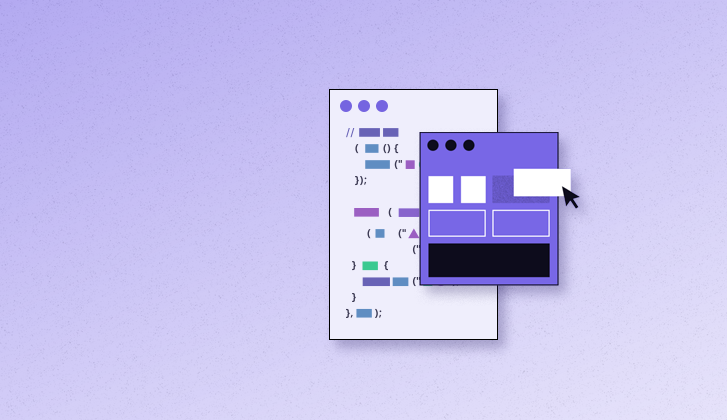How to Build a Software Product: Founders Tips
There’s a ton of content and resources on how to build a successful product. But nothing is more valuable than the real experience and hard-earned insights of people who have gone through this process.
We asked founders and entrepreneurs to share their key learnings, insider tips, and best advice from their startup journey - from ideation to launch. And even some of those “I wish someone had told me” moments and how they turned them around.
Whether you’re just scribbling ideas on a napkin or already deep in the development process, there are golden nuggets of wisdom for every entrepreneur no matter what stage they’re at.
Let’s dive right in!
Table of Contents
The Product Development Process
The Problem Space
At the heart of every successful software product lies a deep understanding of the market and the users. It's not just about having a great idea, but about ensuring that your idea fills a gap in the market and solves real problems for real people.
- Identify a gap in the market
When the team at Traverse began developing their educational platform, they didn't just see an opportunity, they recognised a specific gap in the market.
“To create something useful, start with a deep understanding of the problem you want to solve. For instance, when we started developing Traverse, we saw a gap in the market for a platform that not only aids studying but also makes the process enjoyable. This shaped our product development goals.”
- Dominic Zijlstra, Founder of Traverse & Adaptify AI
Think of this stage as your foundational work. It involves diving deep into market trends, understanding the needs and pains of your target audience, and identifying opportunities where your product can make a real difference.
Ask questions like: What are the users struggling with? What solutions are they currently using, and where do these solutions fall short?
- The role of domain knowledge
Market and competitor research is extremely important in the initial stages of product development. But one thing probably more important than that is making sense of the data and insights you gather.
“There’s always a step where you look at the information and decide what you’re going to do with it. In the UX world, they often refer to this as synthesizing. You’ve got all these new pieces of data, but what are you going to do with them? Is there a trend that's forming that you should listen to, or is it an outlier because of this person's perspective? Having a real understanding of your domain and problem space helps you pick the right things to take into account.”
- Michele Memoli, Co-Founder of HTCH
With a solid understanding of the problem you're addressing, the next step is to define your product's scope.
The Product Scope
This is where you start shaping the product - how it will look and feel, how it should function, etc. Defining the product scope is as much about understanding your limitations as it is about recognising opportunities.
- Striking the right balance
There’s a fine balance between meeting the needs of your users without overextending your resources. Adding a massive list of features might seem tempting, but it can lead to a bloated budget, overburdening your team, cutting corners and diminishing quality.
On the other hand, a too-narrow focus might not fully address the needs of your users. It's about making informed choices - deciding which features are essential for launch and which can wait.
“It's crucial to balance providing enough value and keeping the scope manageable to deliver a high-quality product within a reasonable timeframe.”
- Amy Mangrum, Founder and CEO of House Buying Girls
For each feature ask yourself this: Does the user require this feature to use the product effectively?
If yes, the feature is critical to addressing key needs and pains at the heart of your product. If not, adding the feature is optional - users might find them nice to have but not necessary.
Then you can assign priorities by considering which features bring the most value to your users - these are your must-have features. Make sure you also consider how quickly each feature can be developed, tested and rolled out to make a final decision. Think “high-impact, low-effort”.
- Grounding scope in user research
Every decision about your product's functionality and design should be rooted in a deep understanding of the real problems your target audience faces.
“When I was working on a mobile app for financial budgeting, we conducted extensive user research to understand the challenges people face in managing their finances. This helped us create a product that truly solved their problems and resonated with our target audience.”
- Kevin Shahbazi, CEO and Co-Founder of LogMeOnce
By grounding your scope in research, you avoid the common pitfall of assumption-based development, making sure that every element of your product is relevant, focused, and truly beneficial to your users.
- Simplicity over trends
When you define the scope of your product, it's easy to get caught up in the latest trends. Innovation is a good thing only when it delivers real value.
Always bring the conversation back to the core problem your product is solving. This keeps the product development focused and avoids the trap of adding features for the sake of innovation and novelty.
While it’s important to stay ahead of trends in your sector, make sure to critically assess whether adopting a trend adds real value or if it's just a distraction. Simplicity should be your guiding principle - delivering solutions that are not only effective but also accessible and easy to use.
“It's not always about following the latest trends but about finding deep, often complex insights and presenting them in a simple, user-friendly way.” - Dominic Zijlstra
Once you have figured out the functionalities that your product must have, it’s time to start building.
The MVP
When you’re building a new product from scratch, it’s always best to start with a prototype, proof of concept or a bare-bones version of the product (aka MVP) to test your idea.
- Rethink development standards
“During the initial stages, it is crucial to create an MVP as soon as possible. To achieve this, you need to forget about all conventional development standards and quality assurance practices so that you can iterate as fast as possible.”
- Daria Erina, Managing Director of Linked Helper
As Daria points out, the traditional approach to development and quality assurance may not be suited for the MVP stage. The aim here is speed.
This doesn’t mean you should compromise on quality to the point of delivering a non-functional product. Your MVP should perform as best as possible with the most basic functionality needed to solve the problem you identified earlier.
- Speed vs problem size
While speed is a top priority during the MVP stage, how quickly you can launch will depend on the scope and complexity of your product.
Michele Memoli highlights this as a common challenge: finding a way to simplify the problem enough to launch quickly.
He said: “People always say: launch early, get feedback, but one challenge we always had is that we couldn't find a way to simplify our problem. There's a balance between how big the problem that you've bitten off is and how quickly you can launch.”
One way to balance complexity is by trimming down your project into smaller, more manageable parts. You can also create a small sample or prototype that has only a portion of the final product’s functionality (also known as proof of concept).
- Proof of concept
Unlike an MVP, which aims to deliver a fully functional product with a minimal set of features, a proof of concept is used to demonstrate whether a method, technology, or idea works as intended.
Michele Memoli explained that a proof of concept works better for them than an MVP, and they utilised proof of concepts and demos at HTCH to aid their funding round and demonstrate they have the expertise to execute:
“We build something off to the side that allows us to explore how we could make different technologies work together. But because it's off to the side, it doesn't have the complexity of the full application or the scenarios.“
Post-Launch
Launching your product is only half the battle. The post-launch stage is critical for validating your product in the market, refining features, and building a loyal user base.
- Test and iterate indefinitely
One of the most valuable outcomes of an MVP is the early detection of the product’s misalignment with user needs and expectations. This stage is all about testing your hypotheses in the real world, learning from early feedback, and iterating based on that feedback.
Lucas Ochoa, Founder and CEO of Automat stresses the importance of beta testing:
“Beta testing is essential for any digital product. I can't stress enough how crucial the beta-testing phase is. It can save you time, money, and potentially prevent the collapse of your digital product or even your entire business. Releasing software that is buggy or difficult to use can have detrimental consequences for your reputation.”
- Implement feedback loops
Incorporating feedback tools directly into the product experience simplifies the process for users to share their experiences and suggestions.
As Daria Erina recommends: “Incorporate convenient communication channels to ensure users know they can contact you directly and promptly report any issues encountered while using the product.”
This can be done through in-app surveys, feedback buttons, or user forums. You can also leverage external feedback channels beyond your product, such as social media, email and direct user interviews to capture a broad range of data.
Keep in mind that not all feedback will be equally relevant or actionable, and you will need to separate useful insights from noise. As Michele Memoli noted, collecting feedback is only one part of the equation:
“You still have a task in synthesising that data into some insight. You try to meet with enough people that you can see a pattern and it's the pattern that you design for. If you realise that everyone is struggling with this particular aspect, it might be some idea that's in your product, or it might be a button that’s being missed, then it's the pattern that forms the insight.”
- Track the right things
Once you launch your MVP, you need to understand and select the right metrics or “signals” that will provide insights into how your product is performing.
“After launch, watch your product at work. Use metrics like user engagement to adjust your product. It's a challenging process, but every hurdle crossed takes you closer to success.”
- Abid Salahi, Co-Founder and CEO of FinlyWealth
Michele Memoli highlights an essential truth in the startup world - the metrics that define success vary significantly depending on many actors:
“I think I've certainly learned over the past year that everyone interprets success in different ways. The signals that are used to describe success, change - they change based on who the person is, the stage that the startup is at, even the financial situation and what's going on in the world.“
While conventional metrics like customer numbers and revenue are commonly used indicators of traction, Michele argues that these may not always inspire or accurately reflect the value a startup provides.
Instead, he shared that at HTCH they focus more on collaborative and qualitative metrics that resonate more closely with their team’s values and goals:
“We're more interested in tracking things like how many people are working on this project together and how long was the meeting. This demonstrates how we're being valuable and that's what we're motivated by. If we know and feel that we're valuable for someone somewhere, then the revenue will come.”
Key Startup Lessons Learned
Now that we’ve covered the product development process, here are some of the key lessons learned by entrepreneurs who have navigated the highs and lows of startup life.
Managing your time effectively
Time management is a valuable skill, especially in a startup environment where a lot is happening on a daily basis. The reality of juggling between tasks and responsibilities can be overwhelming.
Michele Memoli learned the importance of focus: “When there are seven competing priorities at all times, the ability to concentrate on one task at a time has been invaluable. Accepting that not everything can be done at once, and choosing where to direct your energy, can make all the difference.”
He adopted strategies such as breaking a task into manageable chunks and dedicating specific time in his calendar to get it done and maintain momentum.
Building strong customer relationships
Staying authentic as your business grows is key to building and maintaining trust and strong connections with your customers. For the team at Traverse, prioritising personal interactions was key to understanding and meeting customer needs.
The founder Dominic Zijlstra shared: “Authenticity and consistency in customer interactions are crucial. In large corporations, the personal connection is quickly lost. So, at Traverse, we prioritised personal interactions. This helped us fulfil the needs of our customers and create a product that truly supports their learning journey.”
Navigating big shifts
Facing strategic or product-related shifts is a common reality for many teams, including HTCH, who realised that their current architecture no longer served the evolving needs of the product close to launch.
Co-founder Michele Memoli recalled how they tackled it: “We had most of the product together and we were gearing up to get some real users on it. But after we received some insight, we realised our current architecture didn’t allow significant changes. This led us to the tough decision: rebuild parts of our application that were getting in the way.”
That’s when the team discovered domain-driven design (DDD) that would address the flexibility they needed. While it was a steep learning curve, Michele said: “Now that we’re through it, it feels like a superpower as we can easily adjust or change our system.”
The value of having a co-founder
Founding a startup is highly rewarding yet can be incredibly tough. Having a co-founder can significantly lighten this load, and be an indispensable support system.
Michele Memoli shared: “I couldn’t do this alone. As a solo entrepreneur, having a co-founder with you just adds so many benefits. You have someone to share the ups and downs with, and someone who understands what you're going through.”
Having a co-founder also makes your startup more appealing to investors by showing that your business isn't dependent on just one person. Investors look favourably upon teams that demonstrate the ability to execute and bring varied expertise to the table.
Michele put it this way: “Having more of a team helps with delegating tasks and getting things done more efficiently. If you have a broader skill set, you can execute. Investors also feel more comfortable knowing that there is a founding team.”
However, to get it right and avoid the risk of conflicts or breaking up, make sure you find someone you can trust, who complements your skills and shares your vision, values and work ethic.
Staying open-minded and embracing change
The most successful products are those that continue to evolve based on user needs, technological advancements, and changing market dynamics.
“Embrace a flexible development approach that adapts to evolving requirements. Some of the most common challenges you'll face include balancing features, timelines, and resources.”
- Perry Zheng, Founder and CEO of Pallas
Final Overview
And there you have it - a roadmap on how to build a successful software product straight from the trenches of startup life.
If you’ve made it this far, thanks for reading! We hope you learned something and feel a bit more prepared to take on the challenges that come with building a product from the ground up.
From wearing many hats to balancing seven things at the same time and being open to change as you grow and learn - the path to turning your idea into a digital product is rarely a straight line, but it is as rewarding as it is challenging.




